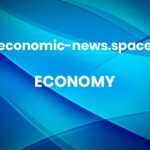The Federal Reserve may need to raise interest rates “sooner or at a faster pace” than officials had initially anticipated as the central bank seeks to tame soaring inflation, according to minutes from its latest meeting.
Minutes released on Wednesday from the December meeting of the Federal Open Market Committee showed officials were fully on board with plans to accelerate the withdrawal of the massive bond-buying programme adopted at the onset of the pandemic. Doing so would give the central bank greater flexibility to raise interest rates this year.
The account of the meeting provided additional detail on why the Fed abruptly pivoted in late 2021 to embrace a more aggressive approach to withdrawing its unprecedented support for financial markets.
A sell-off in US stocks gathered pace after the minutes were released, with the S&P 500 closing down nearly 2 per cent on Wednesday while the technology-heavy Nasdaq Composite was 3.3 per cent lower. Short-dated US government bonds also sold off, with the two-year yield at 0.82 per cent, its highest level since March 2020.
Kathy Bostjancic, chief US financial economist at Oxford Economics, said the minutes showed “rising discomfort with elevated inflation” among Fed officials, who appeared to be confident that the US economy will recover strongly despite the risk of the Omicron variant.
Thomas Simons, an economist at Jefferies, described the minutes as “some of the most hawkish in recent memory”.
December’s meeting also featured the first substantive discussion about the Fed’s balance sheet, which has more than doubled in size since early 2020 and now hovers at just below $9tn.
The minutes suggest broad support for the Fed to begin reducing the size of its balance sheet after the first interest rate increase. Some said a move could happen “relatively soon” afterwards.
“Some participants judged that a less accommodative future stance of policy would likely be warranted and that the committee should convey a strong commitment to address elevated inflation pressures,” the minutes said.
According to the so-called dot plot of individual interest rate projections published by the Fed following its December meeting, officials expect to raise interest rates three times next year, with another three moves pencilled in for 2023 and two more in 2024.
In September, Fed officials had been evenly split on the prospects of lifting the policy rate this year from today’s near-zero level.
Christopher Waller, a governor at the central bank, in December suggested the first rate rise could come as early as March, when the bond-buying programme is set to end.
According to the minutes, policymakers stressed the importance of being flexible when it comes to raising interest rates, especially given the speed of the economic recovery.
“Participants generally noted that, given their individual outlooks for the economy, the labour market, and inflation, it may become warranted to increase the federal funds rate sooner or at a faster pace than participants had earlier anticipated,” the minutes said.
Inflation has been much higher than Fed officials expected in the early days of the recovery from the pandemic, with recent data suggesting that elevated consumer prices could become entrenched.
The minutes highlighted concerns that the supply chain bottlenecks and labour shortages that have contributed to rising prices are likely to “last longer and be more widespread than initially thought”.
At the press conference following the December meeting, Jay Powell, the Fed chair, said the inflation level was “not at all” what the central bank was looking for when it announced in August 2020 that it would tolerate higher prices in order to make up for prior periods, when the central bank undershot its longstanding 2 per cent target.
One of the Fed’s favoured gauges, the personal consumption expenditures price index, registered a 5.7 per cent annual increase in November, the highest jump in roughly four decades.
Fed officials have raised their inflation forecasts accordingly, with the core measure — which strips out volatile items such as food and energy — now expected to have steadied at 4.4 per cent in 2021 before falling further to 2.7 per cent at the end of 2022.
FOMC members and other regional branch presidents also lowered their targets for the unemployment rate, which stands at 4.2 per cent. By the end of 2022, it is expected to dip to 3.5 per cent.
The central bank has committed to keep interest rates near zero until it achieves inflation that averages 2 per cent over time and maximum employment.
The first threshold was “more than met”, the minutes said, with “several” participants seeing labour market conditions already “largely consistent” with the second goal.
Some participants even suggested the Fed could raise rates before maximum employment had been fully achieved, especially if inflationary pressures continue to mount.
Investors increased their bets for a March interest rate increase on Wednesday as they digested the hawkish tilt.
One concern officials flagged when discussing their plans to reduce the size of the Fed’s balance sheet was the resiliency of the Treasury market, with “several” participants noting “vulnerabilities” that may limit how quickly the central bank can shed assets.
Ian Shepherdson, chief economist at Pantheon Macroeconomics expects the Fed to proceed cautiously with any balance sheet adjustments as a result.
“Rate increases send a clearer message to the public, and we see no pressing need to take the risks association with shrinking the balance sheet if the inflation numbers head down in the way we expect in the spring,” he said.



